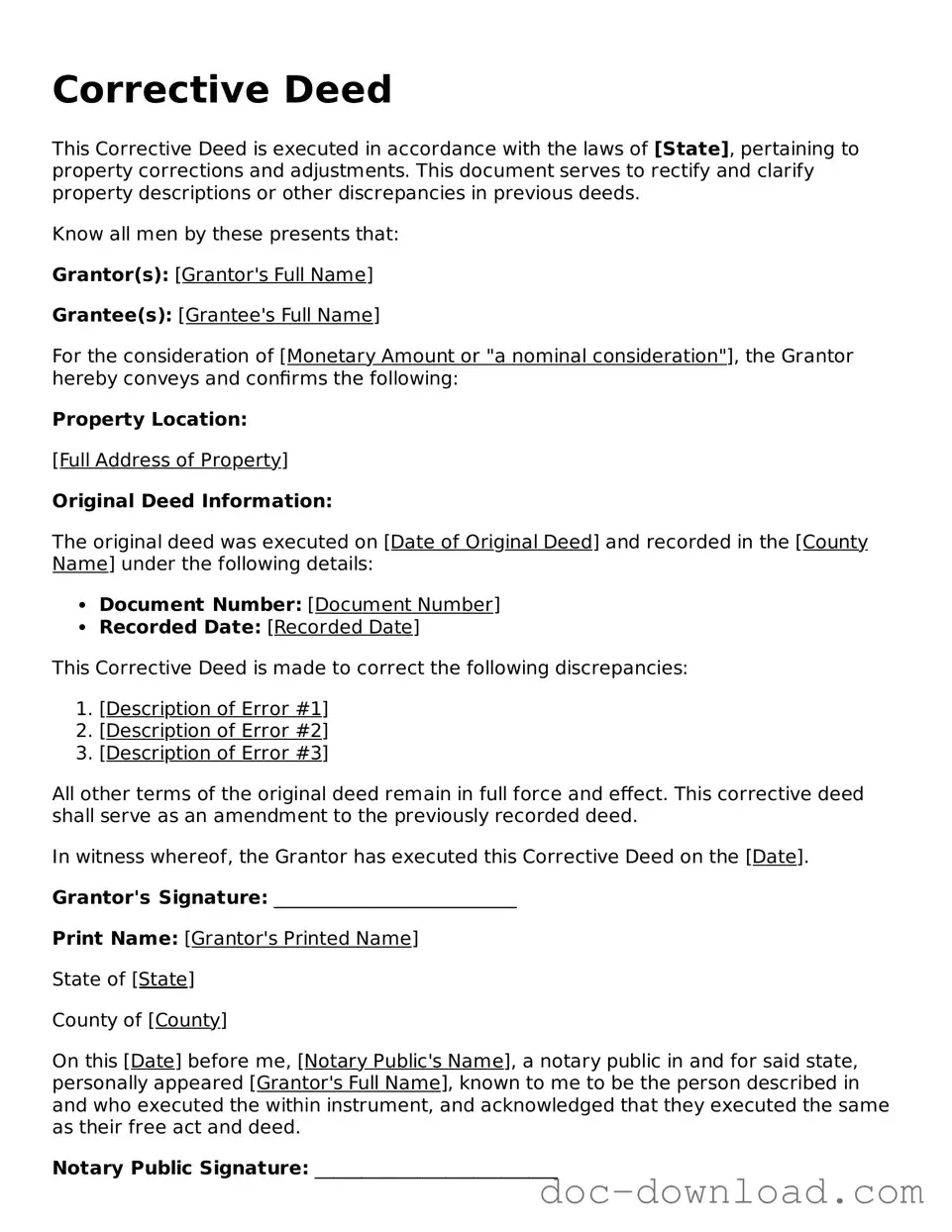Corrective Deed
This Corrective Deed is executed in accordance with the laws of [State], pertaining to property corrections and adjustments. This document serves to rectify and clarify property descriptions or other discrepancies in previous deeds.
Know all men by these presents that:
Grantor(s): [Grantor's Full Name]
Grantee(s): [Grantee's Full Name]
For the consideration of [Monetary Amount or "a nominal consideration"], the Grantor hereby conveys and confirms the following:
Property Location:
[Full Address of Property]
Original Deed Information:
The original deed was executed on [Date of Original Deed] and recorded in the [County Name] under the following details:
- Document Number: [Document Number]
- Recorded Date: [Recorded Date]
This Corrective Deed is made to correct the following discrepancies:
- [Description of Error #1]
- [Description of Error #2]
- [Description of Error #3]
All other terms of the original deed remain in full force and effect. This corrective deed shall serve as an amendment to the previously recorded deed.
In witness whereof, the Grantor has executed this Corrective Deed on the [Date].
Grantor's Signature: __________________________
Print Name: [Grantor's Printed Name]
State of [State]
County of [County]
On this [Date] before me, [Notary Public's Name], a notary public in and for said state, personally appeared [Grantor's Full Name], known to me to be the person described in and who executed the within instrument, and acknowledged that they executed the same as their free act and deed.
Notary Public Signature: __________________________
My Commission Expires: [Date]
